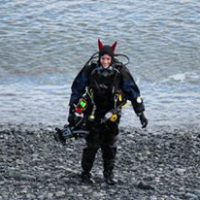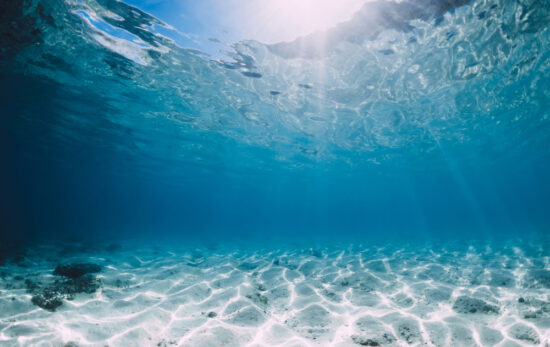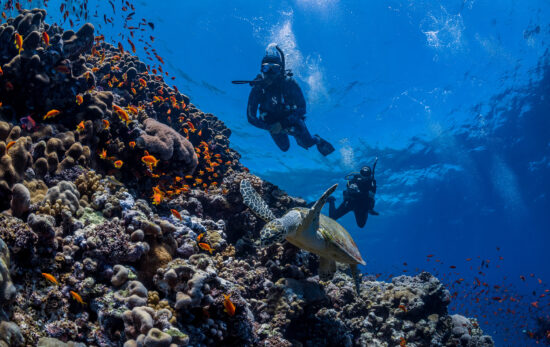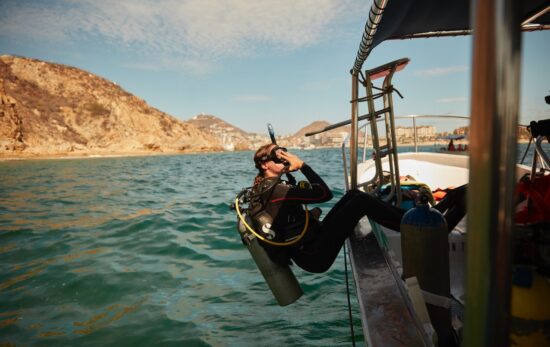We may be biased, but exploring the underwater world is the most fun experience on the planet. Even so, we, as scuba divers, need to follow a few rules that will keep us safe and make sure ensure that the only surprises we encounter are good ones.
Whether you want beginner scuba diving tips or you’re a seasoned diver looking for a recap of safe diving practices, this list summarizes the golden rules of scuba diving.
The Rules of Scuba Diving:
- Never Hold Your Breath
- Plan Your Dive
- Dive Within Your Limits
- Ascend Slowly (and Don’t Forget Your Safety Stop)
- Check Your Gear
- Master Your Neutral Buoyancy Skills
- Never Dive Alone
- Monitor Those Gauges
- Keep Yourself Fit
- Equalize Your Ears
- Don’t Fly Straight After Diving
- Conduct Pre-Dive Checks
- No Touching
- Get Certified
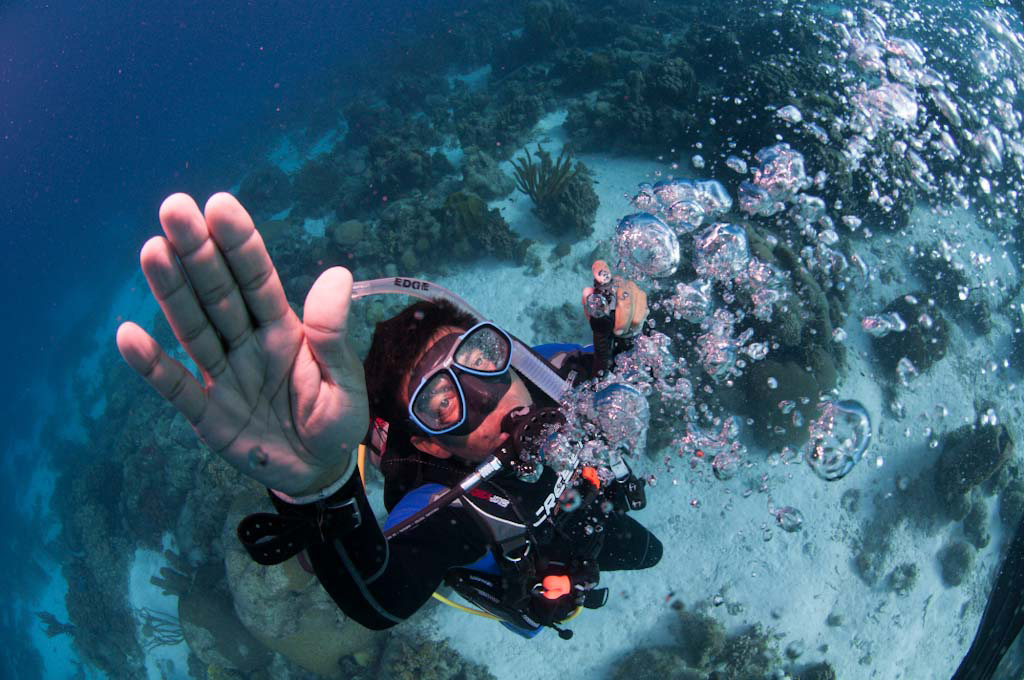
Never Hold Your Breath
The first rule of scuba diving is to breathe continuously and never hold your breath. The effects of water pressure mean the air inside your lungs expands when you ascend, and not releasing it can cause lung injuries. Keep breathing normally throughout your dive, and you’ll also feel calmer and use less gas than if you hold your breath.
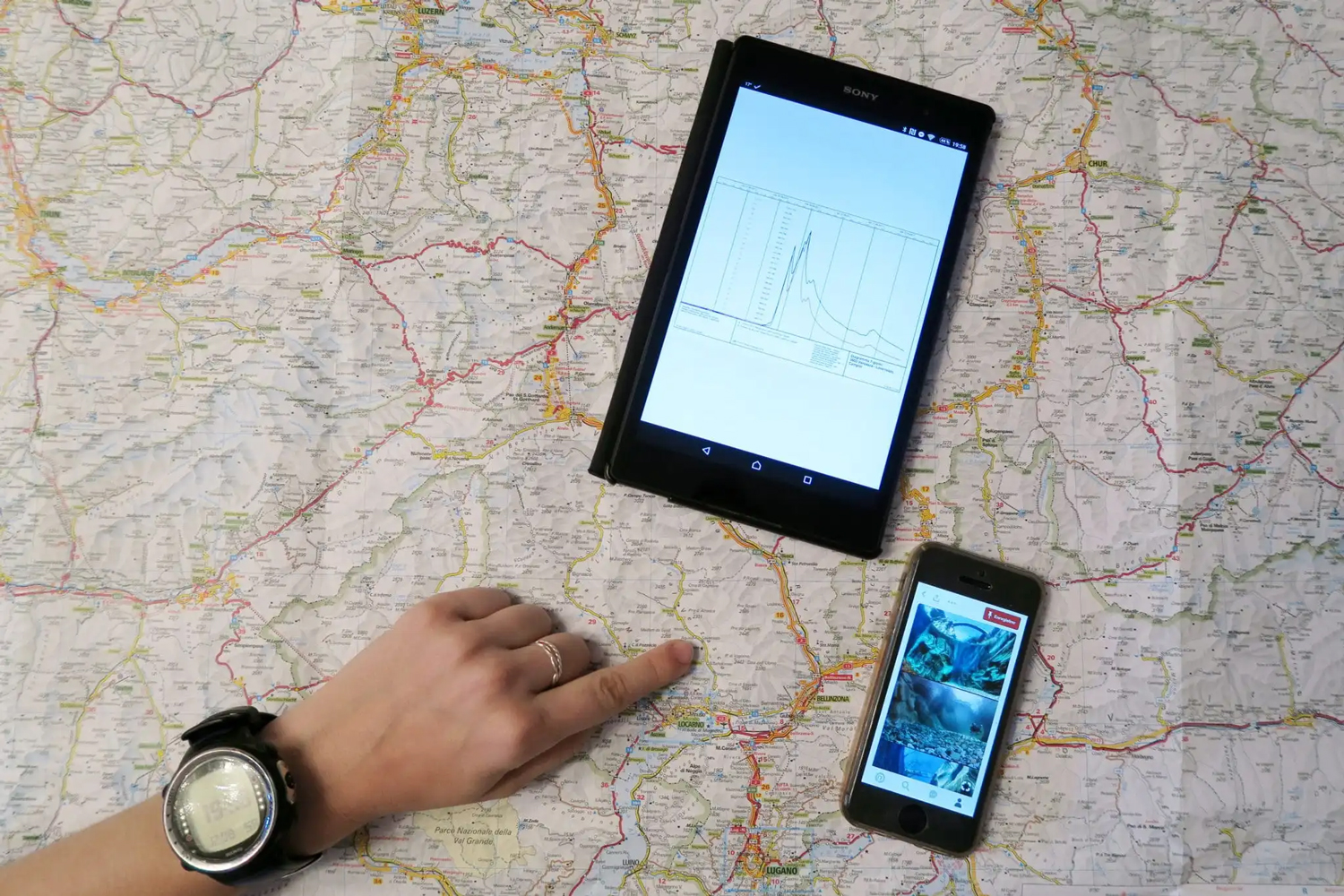
Plan Your Dive
Even if you’re following the lead of a PADI Professional, thinking about your dive plan is the first step to a safe and enjoyable adventure. For instance, it helps you prepare physically and mentally by:
- Knowing what gear to bring
- Predicting and reducing risks
- Anticipating the conditions
- Calming pre-dive nerves
Always plan the dive within no-decompression limits using a dive computer or dive tables. Consider the Rule of Thirds for breathing gas management. Above all, stick to the mantra, “Plan the dive, dive the plan.”
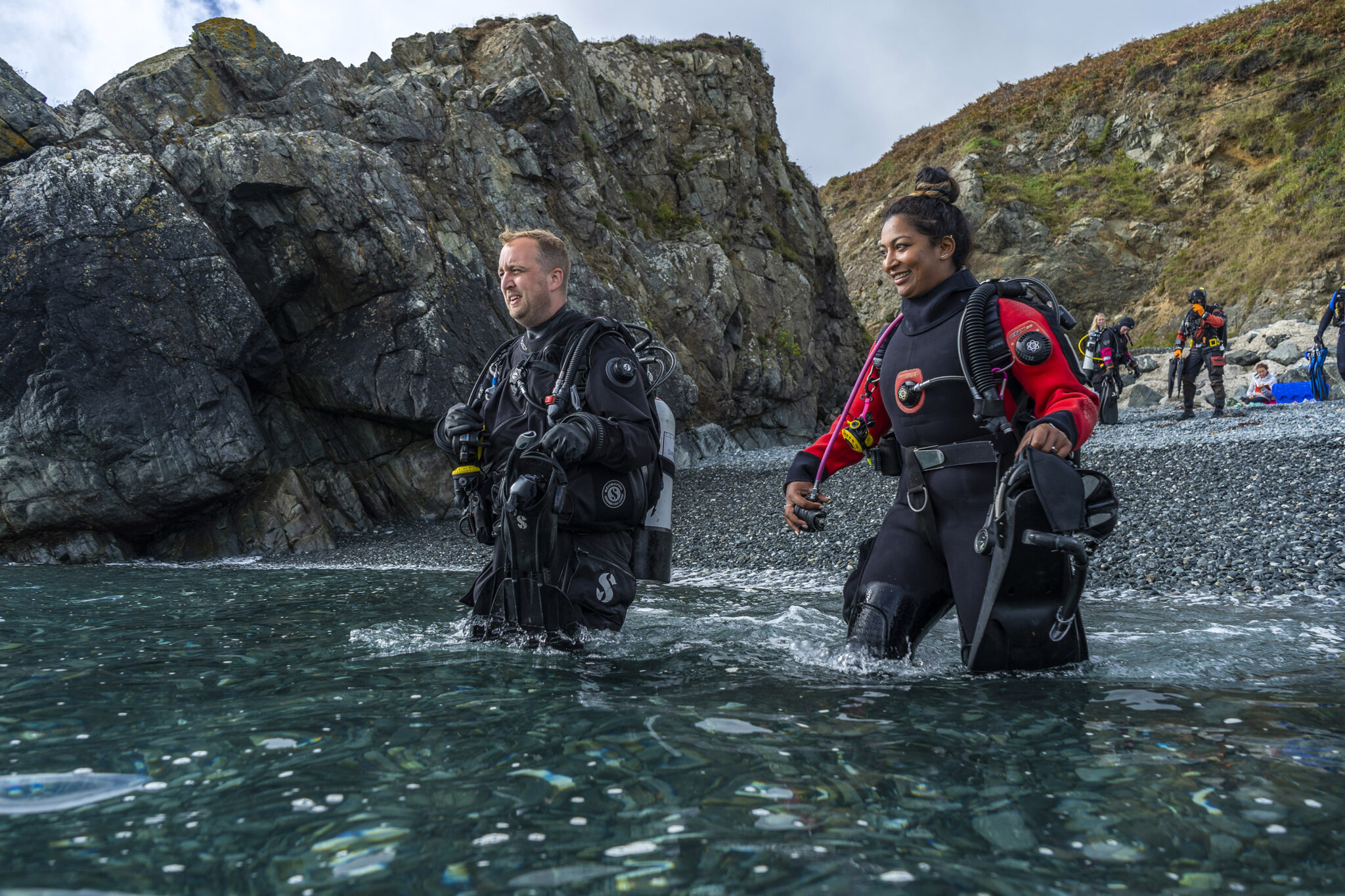
Dive Within Your Limits
A little challenge can be rewarding, but pushing yourself too far is more likely to create problems. There are some hard-and-fast scuba diving rules, such as to stay within the maximum depth limits you’re certified for and whether you’re qualified to do specialist diving, such as ice diving. Otherwise, limits are personal and might change from day to day, depending on things like how recently you’ve dived and if you’ve got experience in the type of diving, location, or conditions.
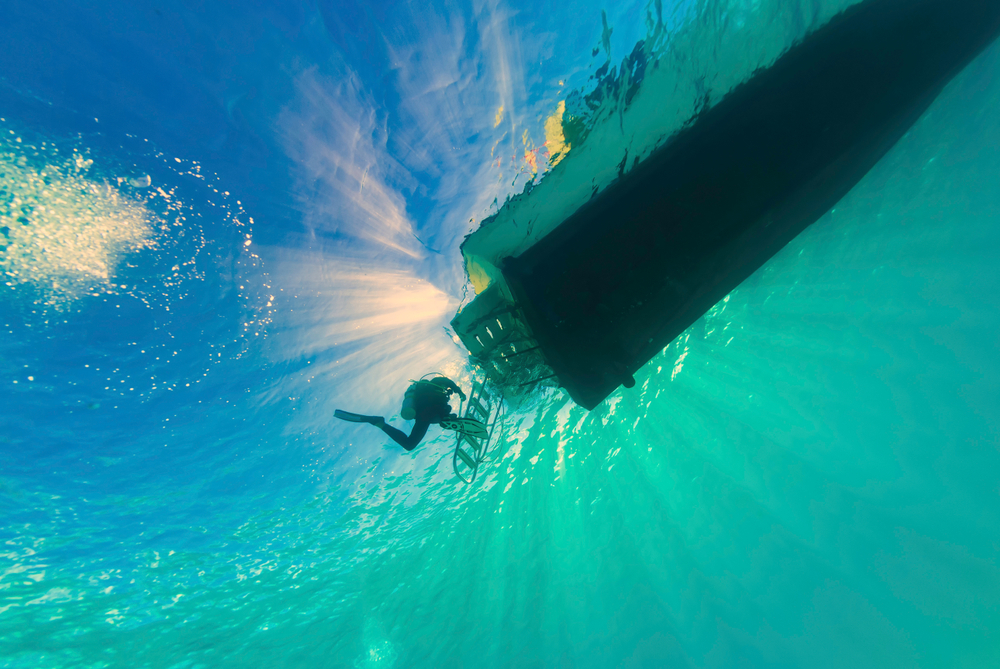
Ascend Slowly (and Don’t Forget Your Safety Stop)
One of the basic rules of scuba diving is to practice safe ascents. This reduces the risk of decompression sickness (DCS), aka “the bends“. Firstly, be a SAFE Diver: Slowly Ascend From Every Dive at a rate of no faster than 18 meters /60 feet per minute. Then, as an extra precaution for recreational diving, make a safety stop at 5 meters/15 feet for at least three minutes (technical diving generally calls for additional stops).
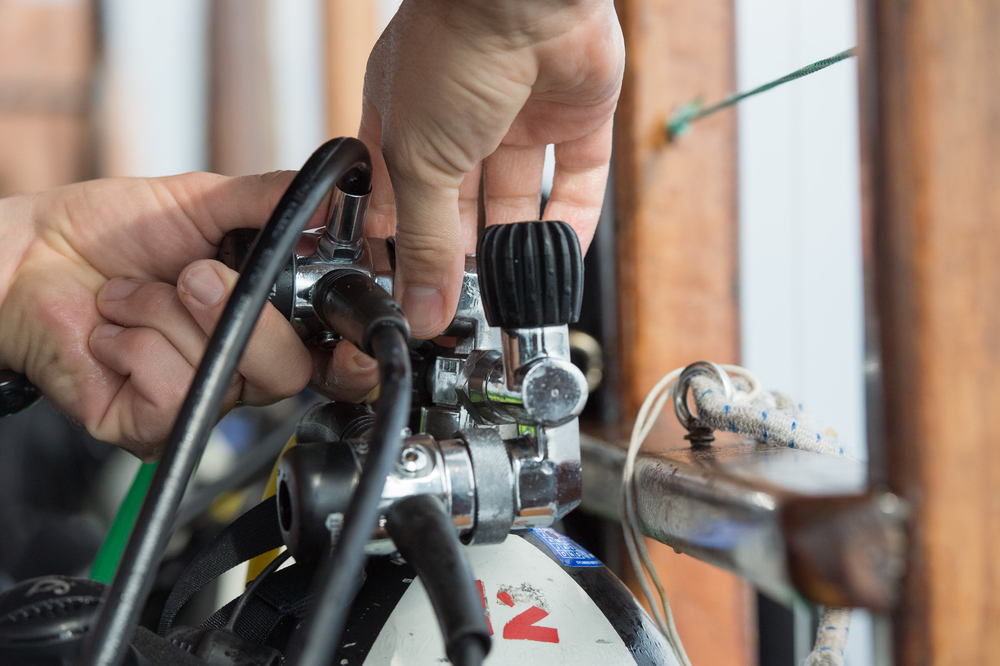
Check Your Gear
As your lifeline underwater, you should check your scuba equipment thoroughly before each dive. For example:
- Is it complete, assembled, and suitable for the dive?
- Are you trained and familiar with how to use it?
- Is it well-maintained and working correctly?
- Is your scuba tank full?
Although rare, it can be dangerous if dive gear malfunctions underwater, so this is another scuba rule you must not ignore.
Master Your Neutral Buoyancy Skills
Practicing and honing your buoyancy skills and weighting makes for safer, happier diving. You’ll be able to control your ascents and descents, hover motionlessly, and glide effortlessly through the water. Moreover, correctly adjusting your buoyancy for the depth and conditions helps you conserve gas and avoid damaging marine life.
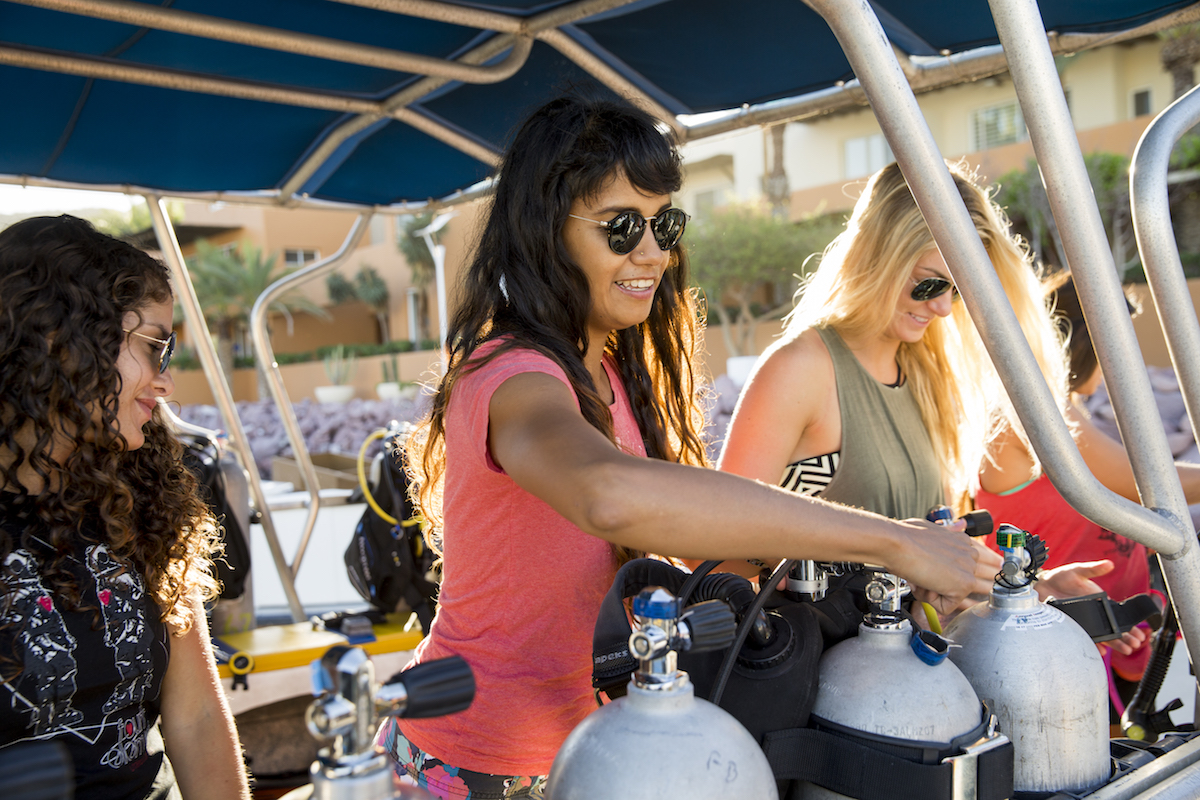
Never Dive Alone
A shared dive is a safe dive. No matter how experienced you are, never dive without a buddy. We use the buddy system to reduce risk and help in an emergency, but your buddy can also assist with navigation, using equipment, and fish identification. Of course, it’s not just about rules in diving; having a buddy means you’ve got someone else to share your unfiltered, epic adventures with!
Get a New Dive Buddy
If you want to share your passion with the people you care most about, then convert your friends into divers and embark on a new buddy adventure together. Invite your friends to learn how to dive with 15% off the Open Water Diver eLearning course and get a free 30-day PADI Club™ trial membership when you refer a friend.
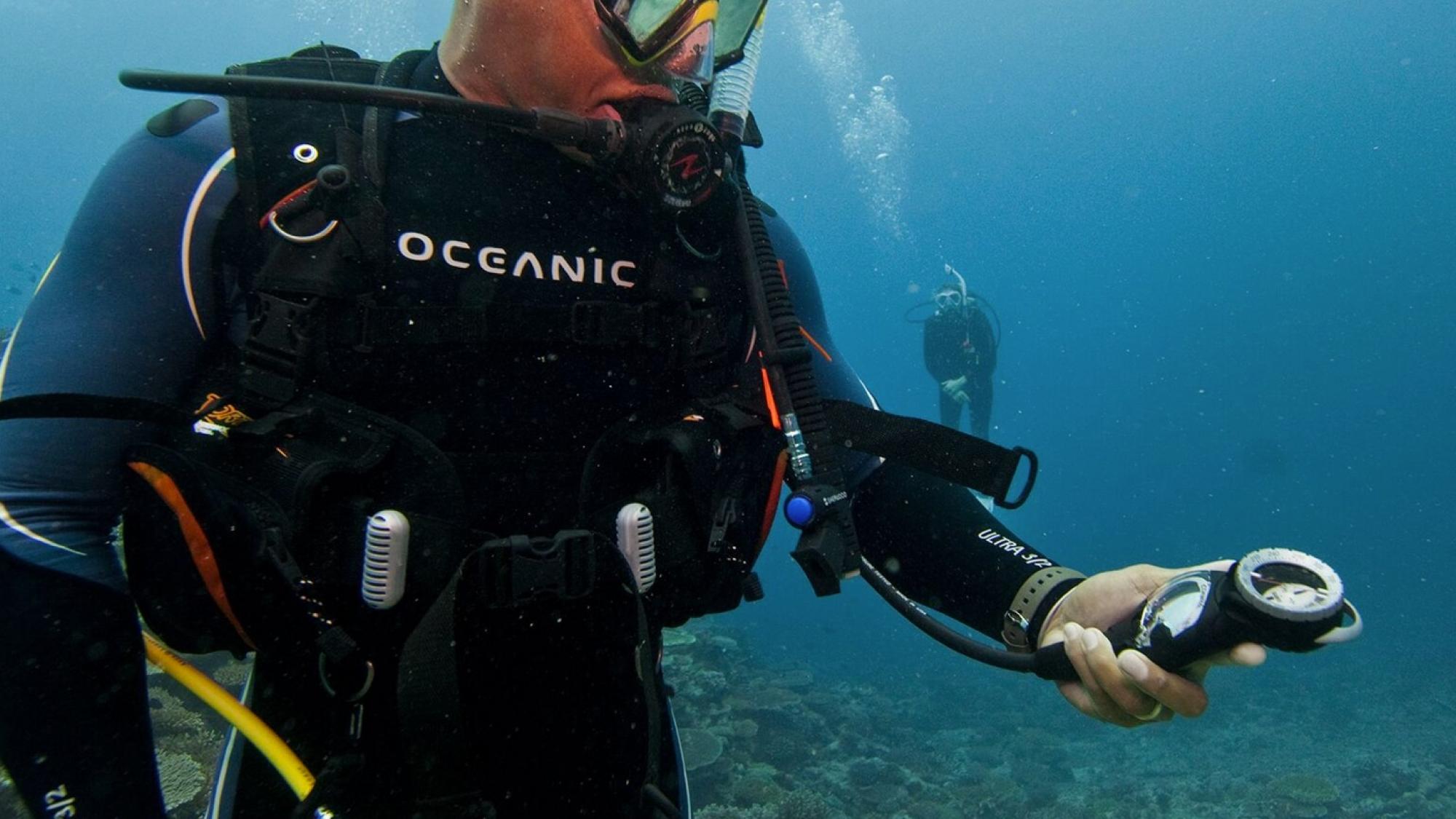
Monitor Those Gauges
Using dive watches, submersible pressure gauges (SPGs), and/or dive computers allows us to monitor vital dive stats, including depth, gas, and bottom time. This helps us maintain our dive plan and avoid sticky situations, like running low on gas. Factors such as depth, temperature, and exertion can all affect gas consumption, which is why the safety rules of scuba diving include checking your gauges or computer every few minutes to prevent surprises.

Keep Yourself Fit
As a diver, you might be carrying heavy gear, learning new skills, or encountering currents. Support a healthy body and mind by following these essential scuba diving guidelines, and you’ll be better placed to handle any mental and physical demands.
- Don’t drink and dive
- Get plenty of rest
- Stay physically fit
- Never dive with a cold
- Eat well
- Practice mindfulness
Try to dive regularly so that your dive skills stay fit, too. You might benefit from additional training or, if it’s been a while since your last dive, a quick scuba diving refresher.
Equalize Often
A cardinal diving safety rule is to equalize often when descending to prevent ear barotrauma. If you’re struggling to “clear your ears”, tell your buddy, ascend slightly, then try again. If that still doesn’t work, end the dive; never continue descending if your ears are hurting, as it may lead to long-term damage.

Don’t Fly Immediately After Diving
With countless incredible dive destinations to explore, we must bear in mind the rules for diving and flying. Because of how residual nitrogen in our bodies responds to the rapid pressure change during a flight at altitude, flying after diving can lead to decompression sickness. As such, the recommendation is to wait 12 to 24 hours before flying after any dive.
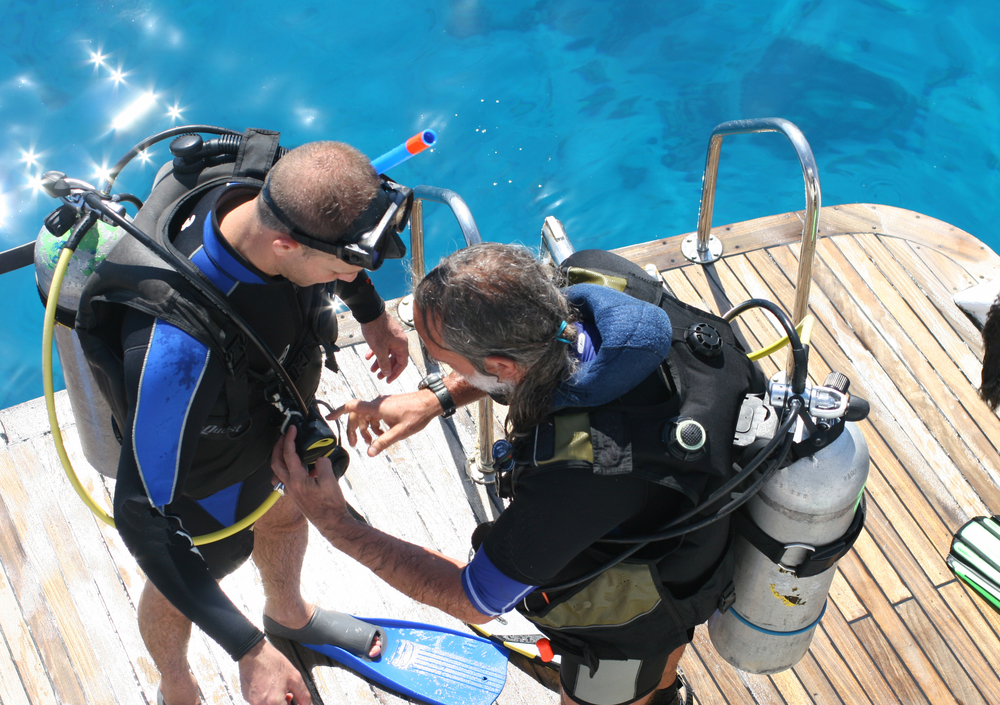
Conduct Pre-Dive Checks
A pre-dive check (or “buddy check”) is the best way to catch and prevent potential issues before a dive. With your buddy, you can:
- Test your equipment works properly (and that your gas is “on”)
- Review your dive plan and emergency procedures
- Familiarize yourself with your buddy’s gear
- Recap or learn dive signals you’ll use together
Whether you follow “BWRAF” or another checklist, one of the top rules in scuba diving is to complete your pre-dive checks before every dive.
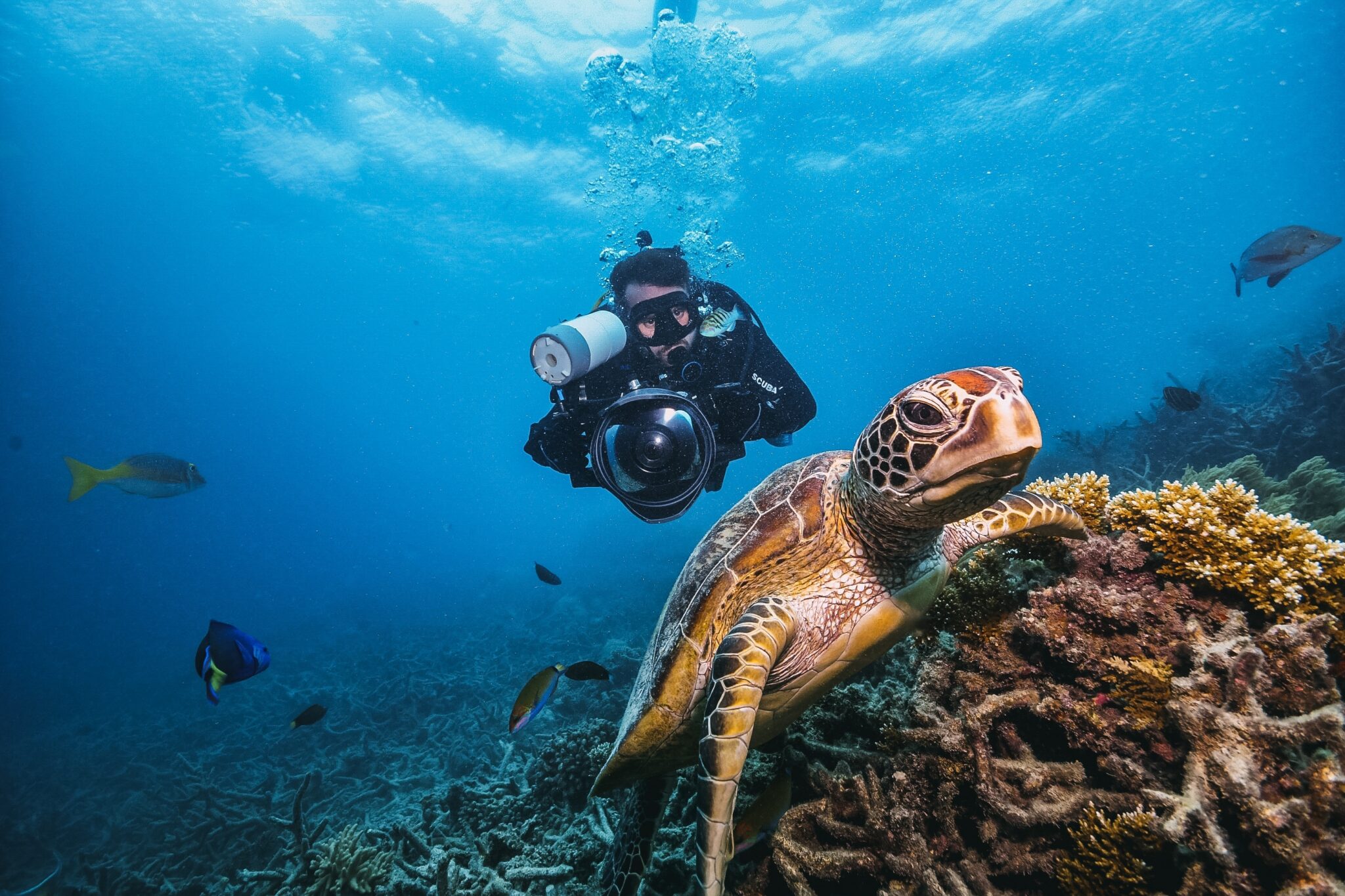
No Touching
This is arguably the most important rule of scuba diving for ocean conservation: do not touch marine life. Reef ecosystems are fragile, and even the lightest touch can be harmful. Secondly, you might get a painful bite, burn, or sting if you disturb toxic critters. Instead, appreciate marine wildlife from a safe distance and capture your memories with photos and videos.
Get Certified
Finally, and perhaps the most important rule of scuba diving, is to make sure you’re certified for the diving you plan to do. That way, you’ll know the correct techniques and diving rules, as well as equipment skills to manage conditions safely.
Getting certified could mean learning scuba fundamentals in the Open Water Diver course or developing your underwater abilities and interests with PADI Specialty courses, such as Night Diver, Enriched Air (Nitrox) Diver, or Wreck Diver. Why not plan your next course today?
